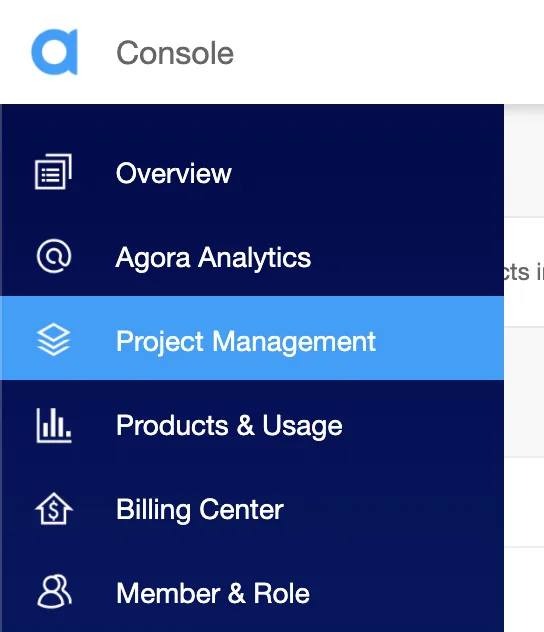
We're offering up to 2 free months to any customer switching from Twilio video to Agora. Schedule some time to chat with our team to get the full details.
This guide will assist you in migrating your existing Twilio Video implementation to the Agora Video SDK. If you are initiating a new project, it is advised to refer to the Agora Video SDK documentation.
Quickstart demos for Android are provided. Check them out at Quickstart Demo. Additional demos can be found at More Demos.
Please follow the documentation here: Video Calling SDK quickstart - Android.
Sign up for an account and log in to the Agora Console.

Navigate to the Project List tab under the Project Management tab, and create a project by clicking the blue Create button. (When prompted to use App ID + Certificate, select App ID only.) Retrieve the App ID, which will be used to authorize your requests while you’re developing the application.
Note: This guide does not implement token authentication, which is recommended for all RTE apps running in production environments. For more information about token-based authentication in the Agora platform, see this guide: https://docs.agora.io/en/video-calling/get-started/authentication-workflow?platform=android
To access Agora services and integrate them into your project, follow these steps to obtain the necessary information from the Agora Console:
By completing these steps, you'll have the necessary credentials to integrate Agora services into your application. Refer to the Agora Console for detailed guidance on accessing and managing these credentials.
Through the Maven Central repository. Add this line to your app/build.gradle file:
Remove this line in app/build.gradle file:
Ensure that you have all of the Android system permissions required by the Video SDK in your project (you can ignore permissions that you already have):
If your project uses proguard, add the following rules to your project.
-keep class io.agora.**{*;}
The Agora Video SDK provides a rich set of features that can enhance your video conferencing application. Here are some key features and information to consider:
For comprehensive details on Agora Video SDK features and how to implement them, refer to the Agora Video SDK Documentation.
Explore the full potential of Agora Video SDK to create a robust and feature-rich video conferencing experience. If you have specific feature requirements, consult the documentation for guidance on implementation.
